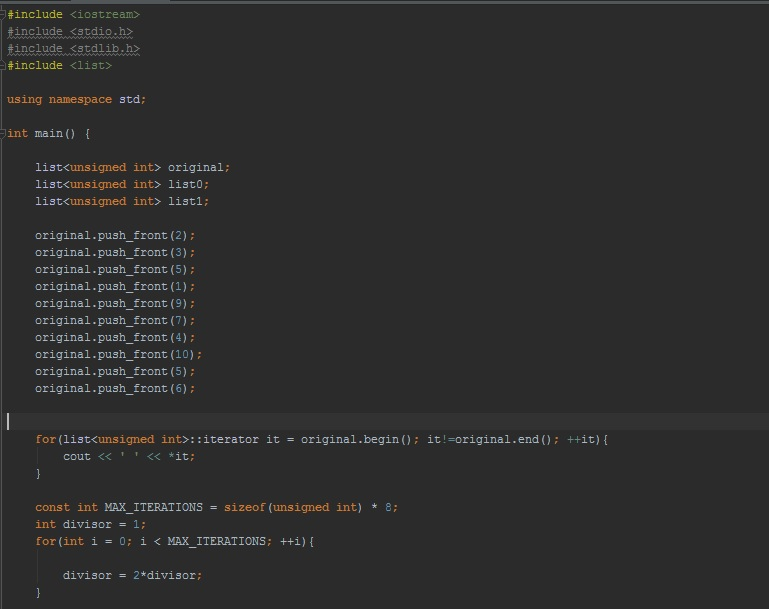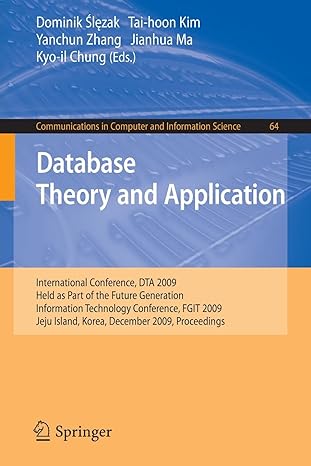Question
A radix sort is a technique for sorting unsigned integers. The algorithm begins by going through the list of elements to be sorted; every even
A radix sort is a technique for sorting unsigned integers. The algorithm begins by going through the list of elements to be sorted; every even number is transferred from the original list to the tail of list 0, and every odd number is transferred to the tail of list 1 (if you are using STL list class, you may remove an item from the head of a list with the pop_front member function, and you may add a new node to the tail of a list with push_back). After all numbers have been processed, put the two lists together (with list0 in front and list1 at the back), and then put the whole thing back in the original list. With the STL list class, this can be done with two splice statements: splice(original.begin(), list 1); splice(original.begin(), list0; The process of seperating and splicing is repeated a second time, but now we seperate based on the boolean expression ((n/2 % 2 == 0) and then we seperate and splice using ((n/4 % 2 == 0), and so on with larger and larger divisors 8, 16, 32, etc. The process stops when the divisor is bigger than the largest number in the list. Here is one way to implement the algorithm: const int MAX_ITERATIONS = sizeof(unsigned int)*8; divisor = 1; for(i = 0; i
HERE'S WHAT I HAVE, PLEASE BUILD OFF THIS AND NOT FOLLOW AN ENTIRE DIFFERENT METHODOLOGY.
 Thank you.
Thank you.
#include kios tream include stdio.h include stdlib.h include Klist> using namespace std; int main list unsigned int> original; listkunsigned int> list0; list unsigned int> list1: original push front (2) original push front (3) original push front (5) original push front (1) original push front (9) original push front (7); original push front (4) original push front (10); original push front (5); original push front (6) for (listkunsigned int iterator it. original begin 0; it! original end ++it) cout *it; const int MAX ITERATIONS sizeof (unsigned int) 8; int divisor for (int i 0; i MAX ITERATIONS ++i) divisor 2 divisor
Step by Step Solution
There are 3 Steps involved in it
Step: 1

Get Instant Access to Expert-Tailored Solutions
See step-by-step solutions with expert insights and AI powered tools for academic success
Step: 2

Step: 3

Ace Your Homework with AI
Get the answers you need in no time with our AI-driven, step-by-step assistance
Get Started


